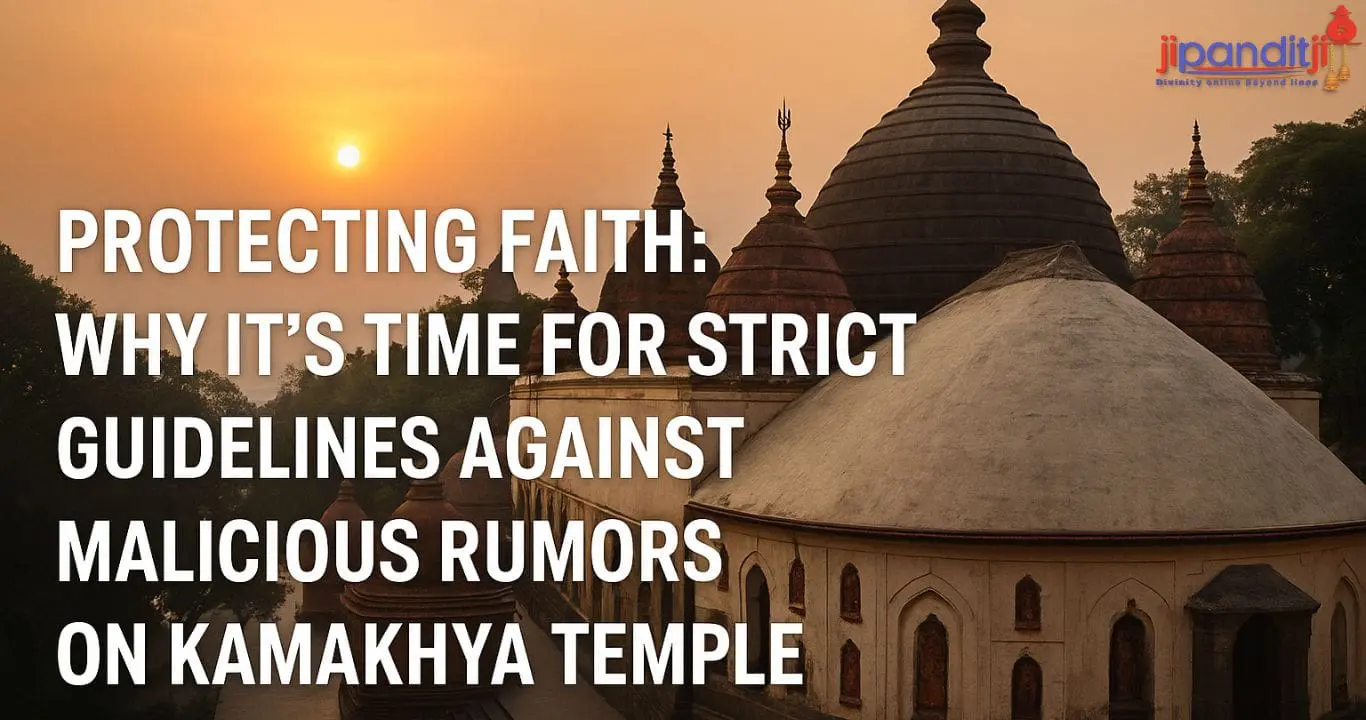“Protecting Faith: Why It’s Time for Strict Guidelines Against Malicious Rumors on Kamakhya Temple”

The Urgent Need to Safeguard Kamakhya Temple’s Reputation
Kamakhya Temple, one of India’s most revered Shakti Peethas, stands as a symbol of divine feminine power, spiritual heritage, and centuries-old devotion. Located atop Nilachal Hill in Assam, this temple attracts millions of devotees and tourists annually. Yet, in recent years, Kamakhya Temple has been plagued by a surge of malicious rumors and misinformation campaigns circulating across social media and digital platforms.
In today’s digital age, where false narratives spread faster than wildfire, protecting religious faith and cultural dignity has become more critical than ever. It’s time for a collective effort and concrete guidelines to combat the spread of malicious rumors about Kamakhya Temple.
Understanding the Impact and Need for Action
1. The Growing Menace of Misinformation
Over the past few years, Kamakhya Temple has become a soft target for social media trolls and rumor-mongers. Videos and posts with misleading content, distorted rituals, and baseless allegations have gone viral, damaging the temple’s global image.
According to a 2024 Social Media Misinformation Report, religious sites in India witnessed a 45% increase in rumor-based posts, with Kamakhya Temple featuring among the top 5 most targeted locations.
These rumors not only affect the temple’s reputation but also hurt the sentiments of millions of devotees worldwide.

2. Why Malicious Rumors About Kamakhya Temple Are Dangerous
Malicious content related to religious sites can have far-reaching consequences beyond the digital world.
- Religious Sentiment Damage:
Fake narratives distort the core beliefs surrounding the temple, creating confusion and religious disharmony. It disrespects the faith and traditions practiced for centuries. - Tourism Impact:
Kamakhya Temple draws thousands of international and domestic tourists every year. Misleading information can reduce footfall, affecting local livelihoods dependent on temple tourism and the regional economy. - Digital Trust Erosion:
Repeated misinformation erodes people’s trust in online platforms and authentic religious content creators. Over time, even truthful content starts getting questioned. - Legal and Social Unrest:
Several viral fake videos have led to police interventions and public unrest, especially during sensitive times like the Ambubachi Mela, one of Kamakhya Temple’s biggest annual festivals.
3. Why We Need Immediate Guidelines
The damage caused by fake news cannot be left unchecked. Concrete steps and national-level guidelines are urgently needed to protect not only Kamakhya Temple but also other religious and cultural institutions across India.
Here’s what needs to be done:
- Mandatory Fact-Checking Mechanisms:
Social media platforms must ensure that viral religious content passes through a fact-checking process before reaching millions. - Quick Response Team (QRT):
Government authorities should establish a dedicated digital monitoring and response unit specifically for religious misinformation. - Stricter Platform Policies:
Social media companies like Facebook, YouTube, and Instagram need to implement faster takedown procedures, flagging, and shadow banning of repeat offenders spreading fake content about religious places. - Digital Literacy Campaigns:
The public needs to be educated about the dangers of sharing unverified religious content. Awareness programs and online workshops can help people identify fake news. - Stronger Legal Frameworks:
There should be well-defined cyber laws with severe penalties for individuals and groups that intentionally spread religious misinformation. India needs a Digital Religious Protection Act focused on this growing threat.
4. The Role of Devotees, Content Creators, and Influencers
Fighting misinformation is not just the responsibility of the government or social media companies. Devotees, travel bloggers, content creators, and even casual social media users need to be vigilant and responsible.
Here’s how everyone can help:
- Promote Authentic Content:
Highlight the temple’s rich history, spiritual significance, and authentic rituals. Share only verified information. - Report and Block:
If you come across any malicious or fake post about Kamakhya Temple, report it immediately. Block repeat offenders and encourage others to do the same. - Engage in Positive Storytelling:
Use social media platforms to spread real stories, experiences, and the spiritual beauty of Kamakhya Temple. - Support Awareness Campaigns:
Participate in and support initiatives aimed at educating people about the dangers of religious misinformation.
It’s Time for Responsible Digital Behavior
Kamakhya Temple is not just a place of worship; it’s a living symbol of faith, tradition, and community for millions. The digital age brings both opportunities and threats. While technology allows devotees to connect with their faith from anywhere, it also opens the door for malicious elements to spread lies and negativity.
Now is the time for collective action. Whether you’re a devotee, a policymaker, a social media platform, or an everyday user, you have a role to play in safeguarding religious harmony and protecting faith.
Let’s unite to stop the spread of fake news and ensure that Kamakhya Temple remains a place of truth, peace, and spiritual power for generations to come.

